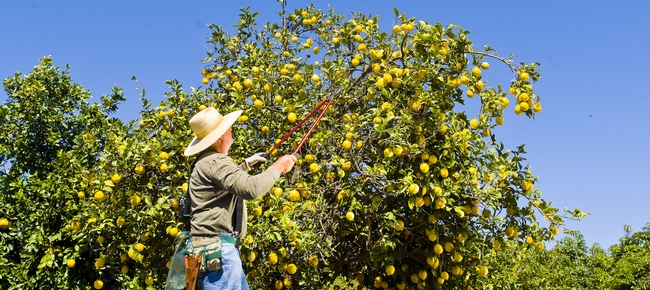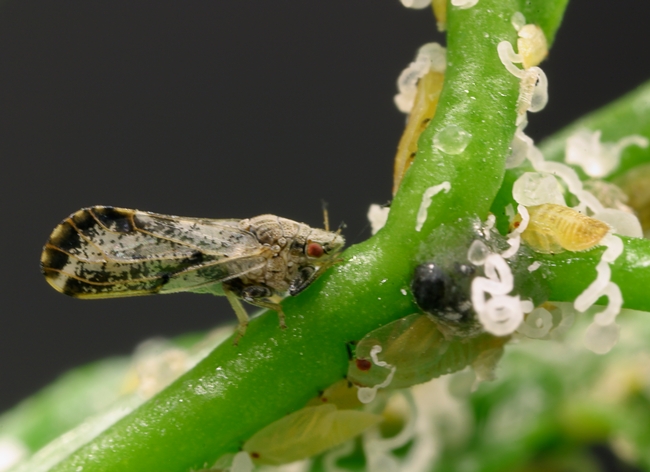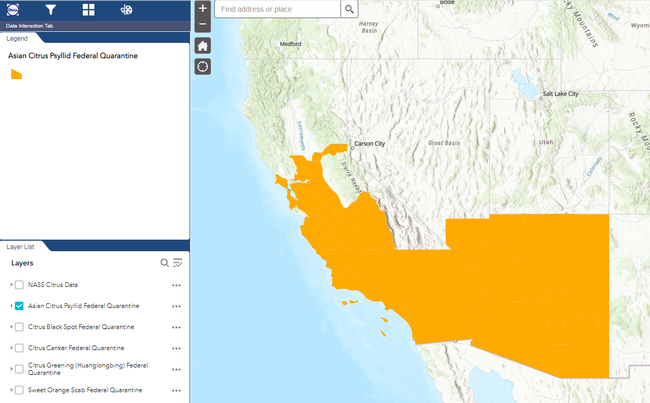Citrus Care in the Sharing Season - Help Prevent the Spread of Asian Citrus Psyllid (ACP)
As gardeners, we're often generous with our garden's bounty. From sharing seeds and plant trimmings to the joy of gifting homegrown fruit and vegetables, gardening is as much about community as it is about growing plants. However, in this season of sharing, we must also remember our responsibility to prevent the spread of pests and invasive species to protect California's diverse ecosystem.
First detected in California in 2008, Asian citrus psyllid (ACP) has been a concern for both commercial citrus growers and home gardeners. ACP poses a significant threat to California's citrus trees, capable of spreading the deadly huanglongbing (HLB) disease, an incurable condition that eventually kills the tree.
Detecting ACP involves looking for a few key characteristics. ACP is a tiny, mottled brown insect about the size of an aphid. Adults are typically 3 to 4 millimeters long and are identified by their distinctive body shape, where the head is narrower than the body, and they hold their wings tent-like over their bodies. They are most active during warm temperatures, and you might notice them jumping or flying when disturbed. The nymphs, the immature form of the psyllid, are yellowish-orange and secrete white, waxy tubules from the back of their abdomen.
Additionally, ACP leaves telltale signs on citrus leaves, such as twisted or curled new leaf growth. They are sap-feeders, like aphids and mealybugs, so they produce honeydew which leads to the growth of sooty mold. Regularly inspecting your citrus trees, especially the new growth, is key to early detection of ACP.
Recent updates to the USDA's Plant Protection and Quarantine citrus map highlights areas that are generally infested with ACP and those which are not. This distinction is crucial for understanding the regulations and eradication efforts in different regions across the state. To find detailed quarantine information by county or zones, visit the California Department of Food and Agriculture (CDFA) ACP Regulation and Quarantine Boundaries website and maps.
Looking at the map pictured above, areas in the southern region of California, south of the Grapevine or San Gabriel and Tehachapi Mountain Ranges, and as far up the coast as Santa Barbara County are considered generally infested. The CDFA does not carry out eradication efforts for ACP in these areas. In areas north of the Grapevine, an ACP detection on a residential citrus tree would trigger an eradication response from the CDFA.
As we approach the holiday season, a popular time for gardeners to share budwood for grafting, it's crucial to understand the importance of not moving citrus planting material between quarantine areas. It is especially important not to move budwood or citrus from Southern California or the Bay Area into California's Central Valley.
To aid in this effort, UC Master Gardener Program resources are available to help educate you about identifying ACP and understanding the quarantine regulations. Here are some key actions you can take:
- Only purchase new citrus trees from reputable nurseries.
- Do not accept tree cuttings or budwood from friends or family.
- After pruning or removing a citrus tree, dry out the green waste or double bag it to help ensure the green waste is disposed of appropriately.
- Control ants in and near citrus trees with bait stations. Scientists have released natural enemies of ACP in Southern California to help keep the pest in check, but ants aid ACP in evading the natural enemies.
The UC Agriculture and Natural Resources ACP website offers an interactive map tool, biological control efforts, and an online calculator for the potential costs of using insecticides. Additionally, the Statewide UC Integrated Pest Management website provides free online training for gardeners and detailed Pest Notes on ACP and HLB disease. Remember, inspecting your citrus trees is vital to prevent the spread of ACP and HLB. If you suspect an infestation, contact the CDFA Exotic Pest Hotline at 1 (800) 491-1899 or your local county agricultural commissioner.
Let's continue to share the bounties of our gardens, but let's do so responsibly, keeping our citrus trees safe and healthy. Together, we can make a difference in the fight against ACP and HLB.



